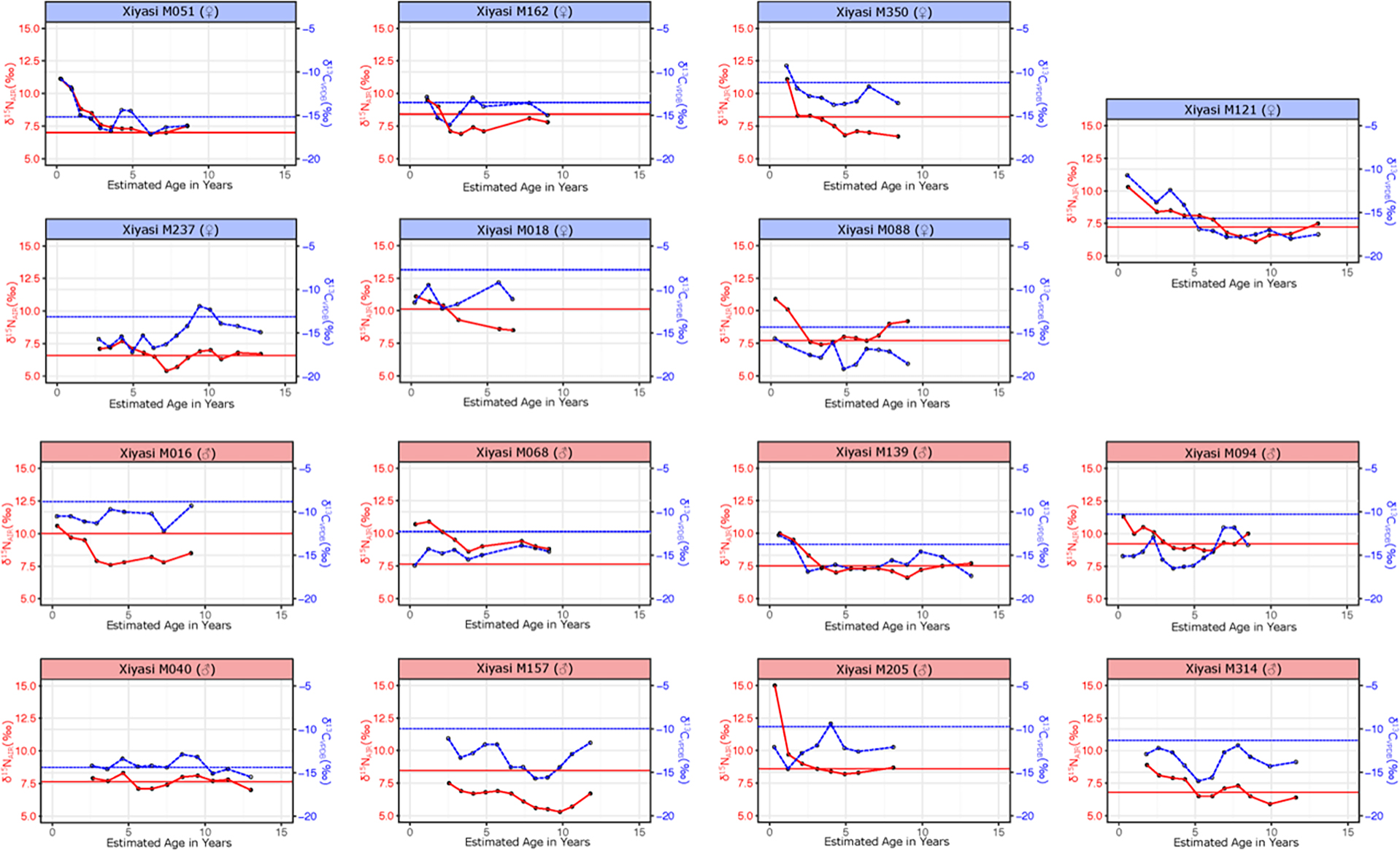
Supplemental Information for Miller et al. “Gender across Generations: Childhood Food Practices as Socialization Processes in Ancient China”
Archaeological Information
Tiancheng (天成)
天成隔热材料厂墓地位于新郑市梨河镇七里闫行政村,距新郑市区约 3.5 千米。该墓地东邻丰达陶瓷厂,西邻长城石化燃气站,南邻七里闫村耕地,北邻韩城路,周围地势平坦,南北长 174 米,东西宽 134 米,面 积约 24000 平方米。2008 年,为了配合该厂发展的需要,新郑市文物局 对该墓地进行了勘探。随后,河南省文物考古研究院对此墓地进行了发掘。至 2009 年 8 月,共清理墓葬 171 座,其中东周时期墓葬 158 座,秦汉时期墓葬 12 座,宋墓 1 座。根据发掘后的初步整理情况可知,该墓地是一处平民墓葬区。
The cemetery of Tiancheng Thermal Insulation Material Factory is located in Qiliyan Administrative Village, Lihe Town, Xinzheng City, about 3.5 km from Xinzheng City. The cemetery is adjacent to Fengda Ceramics Factory in the east, Changcheng Petrochemical Gas Station in the west, cultivated land of Qili Yancun Village to the south, and Hancheng Road in the north. In 2008, in order to meet the needs of the factory’s development, the Xinzheng City Cultural Relics Bureau conducted a survey of the cemetery. Subsequently, the Henan Provincial Institute of Cultural Relics and Archaeology excavated the cemetery. As of August 2009, a total of 171 tombs have been cleared, including 158 tombs from the Eastern Zhou Dynasty, 12 tombs from the Qin and Han Dynasties, and 1 tomb from the Song Dynasty. According to the preliminary arrangement after the excavation, the cemetery is a civilian burial area.
Gaolou (郜楼)
郜楼墓地位于新郑市梨河镇韩城路东段北,郜楼村南。2013年10月,河南省文物考古研究院新郑工作站对郑州和一正生物科技有限公司综合车间、科研办公楼等工程用地进行了考古发掘。共清理东周时期中小型墓葬150余座,出土骨、玉等不同质料的文物数件,陶器500余件,以日用陶器为主。墓地的使用年代从春秋早期至战国中期。除一座墓葬以外(M139,未取样),其余墓葬均为平民阶层。
Gaolou Cemetery is located in the north of the east section of Hancheng Road, Lihe Town, Xinzheng City, and south of Gaolou Village. In October 2013, the Xinzheng Workstation of the Henan Provincial Institute of Cultural Relics and Archeology conducted archaeological excavations on the planned comprehensive workshops and scientific research office buildings of Zhengzhou Heyizheng Biotechnology Co., Ltd. A total of more than 150 small- and medium-sized tombs from the Eastern Zhou Dynasty were excavated, as well as many artifacts of different materials such as bone and jade, and more than 500 pieces of pottery were unearthed, mainly pottery for daily use. The cemetery was used from the early Spring and Autumn period to the middle Warring States period. Except for one burial (M139, not sampled), the rest of the burials are thought to be of the civilian class.
Guomianyichang (国棉一厂)
龙湖国棉一厂墓地位于新郑市龙湖镇双湖大道和新郑快速通道交叉口东北角,距新郑城北约30多公里,总面积约10000平方米。2007年4月,经国家文物局批准,河南省文物考古研究院新郑工作站对其进行发掘。共发现春秋到两汉时期的墓葬168座,其中东周墓葬113座,以竖穴土坑墓为主,随葬器物大多为陶器,包括陶鬲、陶盂、陶罐、陶豆等。汉代墓葬55座,年代从西汉中晚期延续到东汉早期,墓葬形制可分为砖室墓和土坑墓,随葬器物包括陶器、铜器、铁器等共计400余件。根据墓葬形制及出土的随葬品判断,该地应该是东周至两汉时期的平民墓地 。
The cemetery of Longhu Guomianyichang (National Cotton No. 1 Factory) is located at the northeast corner of the intersection of Shuanghu Avenue and Xinzheng Expressway, Longhu Town, Xinzheng City, about 30 km north of Xinzheng City, with a total area of about 10,000 square meters. In April 2007, with the approval of the National Cultural Heritage Administration, the Xinzheng Workstation of the Henan Provincial Institute of Cultural Relics and Archaeology excavated the cemetery. A total of 168 tombs from the Spring and Autumn period to the Han Dynasty were discovered, including 113 Eastern Zhou tombs, mainly vertical pit tombs, and most of the funerary objects were pottery, including bowls, pots, and so on. There are 55 tombs from the Han Dynasty, dating from the middle and late Western Han Dynasty to the early Eastern Han Dynasty. The tombs can be divided into brick chamber tombs and earth pit tombs. There are more than 400 burial objects, including pottery, bronze, and iron. Judging from the shape of the tomb and the unearthed burial objects, the site appears to be a civilian cemetery from the Eastern Zhou Dynasty to the Han Dynasty.
Supplemental Figures
Figure S1. Isotopic profiles for individuals from Xiyasi (n = 15; n = 7 females, light blue headers; n = 8 males, light red headers). δ15N values are in red (solid plotted line with circles shows dentin collagen values and horizontal line is bone collagen value), and δ13C values are in blue (dashed plotted line with circles shows dentin collagen values and dashed horizontal line is bone collagen value).
Figure S2. Isotopic profiles for individuals from Changxinyuan (n = 8; n = 4 females, light blue headers; n = 4 males, light red headers). δ15N values are in red (solid plotted line with circles shows dentin collagen values and horizontal line is bone collagen value), and δ13C values are in blue (dashed plotted line with circles shows dentin collagen values and dashed horizontal line is bone collagen value).